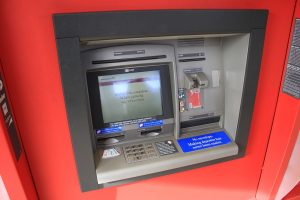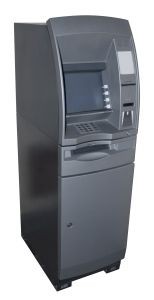 Federal law enforcement officers have arrest two more suspects in an ATM theft and robbery scheme that allegedly resulted in over $8 million in ill-gotten gains. The two suspects from Prince George’s County were brought before a federal magistrate judge and held without bond on charges of conspiracy to interfere with interstate commerce by robbery. During the detention hearings the government alleged that both defendants were part of a group that had targeted over 75 ATM machines in the Delaware, Maryland and Virginia area since 2023. According to a detention memo filed by the government, the group allegedly used high powered tools such as gas-powered saws and Jaws of Life machines to pry open the ATMs and steal the cash. These ATM machines were primarily located in 7-Eleven stores, and the group apparently hit multiple stores in one night. The memo also laid out the common method in which the group would carry out the robberies and included using radios to communicate and splitting the responsibilities between opening the ATMs, destroying surveillance and subduing employees. Federal prosecutors emphasized that many of these robberies were carried out with firearms, and that search warrants executed on the suspect’s homes and storage units produced multiple handguns and rifles.
Federal law enforcement officers have arrest two more suspects in an ATM theft and robbery scheme that allegedly resulted in over $8 million in ill-gotten gains. The two suspects from Prince George’s County were brought before a federal magistrate judge and held without bond on charges of conspiracy to interfere with interstate commerce by robbery. During the detention hearings the government alleged that both defendants were part of a group that had targeted over 75 ATM machines in the Delaware, Maryland and Virginia area since 2023. According to a detention memo filed by the government, the group allegedly used high powered tools such as gas-powered saws and Jaws of Life machines to pry open the ATMs and steal the cash. These ATM machines were primarily located in 7-Eleven stores, and the group apparently hit multiple stores in one night. The memo also laid out the common method in which the group would carry out the robberies and included using radios to communicate and splitting the responsibilities between opening the ATMs, destroying surveillance and subduing employees. Federal prosecutors emphasized that many of these robberies were carried out with firearms, and that search warrants executed on the suspect’s homes and storage units produced multiple handguns and rifles.
Numerous other defendants have been arrested and charged in this ATM theft and robbery scheme, but there have been additional reported incidents that are not related to this group. Both the Prince George’s and Montgomery County Police Departments have been on high alert for the past year or so, and PG County has a dedicated detective unit assigned to ATM thefts. A few months ago, another defendant was arrested for allegedly robbing eight 7-Elevens in Prince George’s County. This 31-year-old man from Upper Marlboro is facing a 44-count indictment in the PG County Circuit Court that is apparently not related to the federal conspiracy. He is currently held without bond at the detention center and is set for trial in April after several prior trial dates had been postponed. Since his arrest there have been additional incidents involving ATM thefts in the area. Recently a pair of suspects backed a 15-passenger van into a Montgomery County 7-Eleven and then loaded the entire cash machine in the back as they stepped over a mix of shattered glass and junk food. This incident would likely be charged as a theft and malicious destruction of property and not a robbery. If the store was occupied the defendants could conceivably be charged with reckless endangerment and even first-degree assault depending on the location of the individuals in the store. Robbery requires that the defendants assert some sort of force over another person to carry out the theft, and in most cases the penalty for robbery and armed robbery is significantly higher than theft.
The Blog will continue to follow this incident and other cases involving ATM theft in the area. We will post a follow up article if any newsworthy developments come out of the state or federal courthouses in Upper Marlboro, Rockville or Greenbelt. If you have been charged or are being investigated for robbery anywhere in Maryland contact Benjamin Herbst anytime for a free consultation. Benjamin is a theft and robbery lawyer who has extensive experience with juvenile criminal defense and gun charges. He represents clients in state and federal court and is available 7 days per week for a free consultation. Benjamin is also available on short notice for bail reviews and detention hearings and specializes in probation violation defense in all Maryland jurisdictions.
 Criminal Defense Lawyer Blog
Criminal Defense Lawyer Blog









